1881-1914: Construction of the Panama Canal
Categories: History
By Pictolic https://pictolic.com/article/1881-1914-construction-of-the-panama-canal.htmlSince the 16th century, the narrow isthmus connecting North and South America has been considered a very promising place for creating the shortest route between the Atlantic and Pacific oceans.
In the 19th century, the development of technology and the need for such a route reached a point where the plan to create a canal through Panama looked quite realistic.
(Total 40 photos)
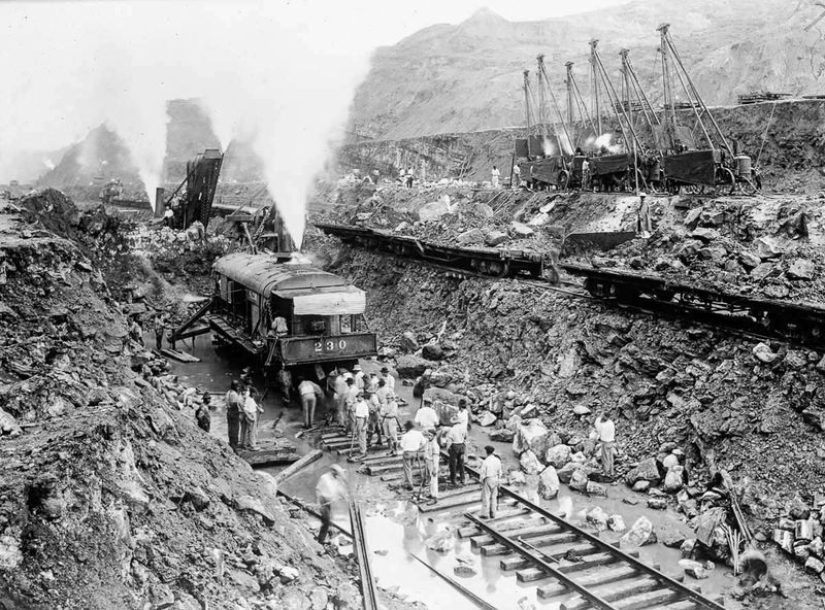 Source: deadbees.net
Source: deadbees.net
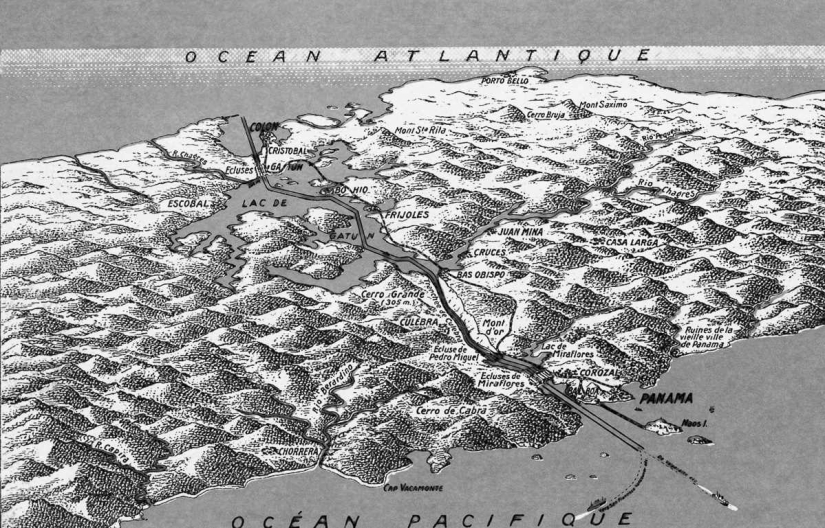
1. 1910 Map of the planned channel.
Inspired by the 10-year construction of the Suez Canal, the international company La Société Internationale du Canal Interocéanique in 1879 bought the concession for the construction of the Panama Canal from the engineer Wise for 10 million francs, which he received from the Colombian government, which controlled Panama at that time.
Fundraising for large-scale construction was led by Ferdinand Lesseps. Success with the Suez Canal helped him raise millions for a new project.
Soon after the design of the canal began, it became clear that this undertaking would be much more difficult to implement than digging a canal at sea level through a sandy desert. After all, the proposed route, 65 kilometers long, passed through rocky and sometimes mountainous terrain, while it was crossed by powerful rivers. Most importantly, tropical diseases posed enormous health risks to workers.
Nevertheless, Lesseps' optimistic plan called for a $120 million canal to be built in just six years. The 40,000-strong team, almost entirely composed of workers from the West Indies, was led by engineers from France.
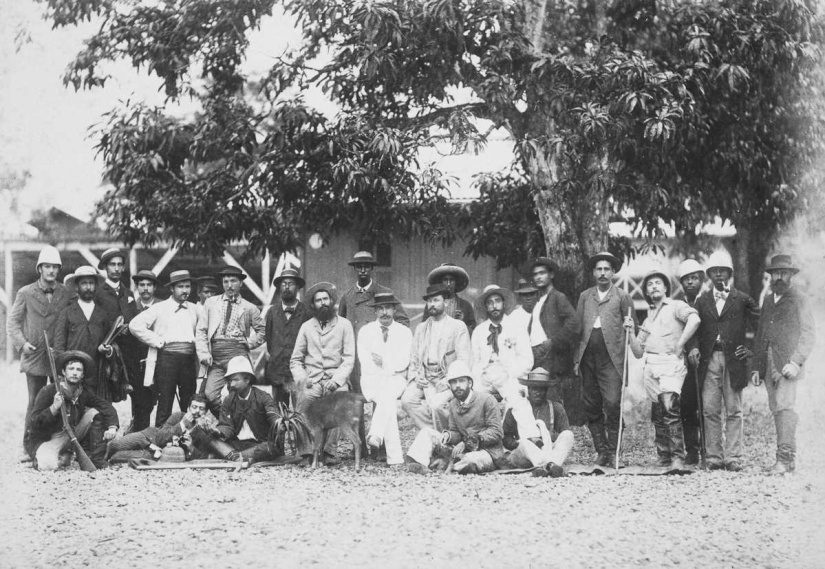
2. 1885 French employees of the Panama Canal pose for a photograph.
Construction began in 1881.

3. 1885 The workers came to get their wages.
“The experience in Suez was of little help. It would probably be better in the long run if they didn't have the Suez Canal in their past" (David McCullough, "The Way Between the Seas").
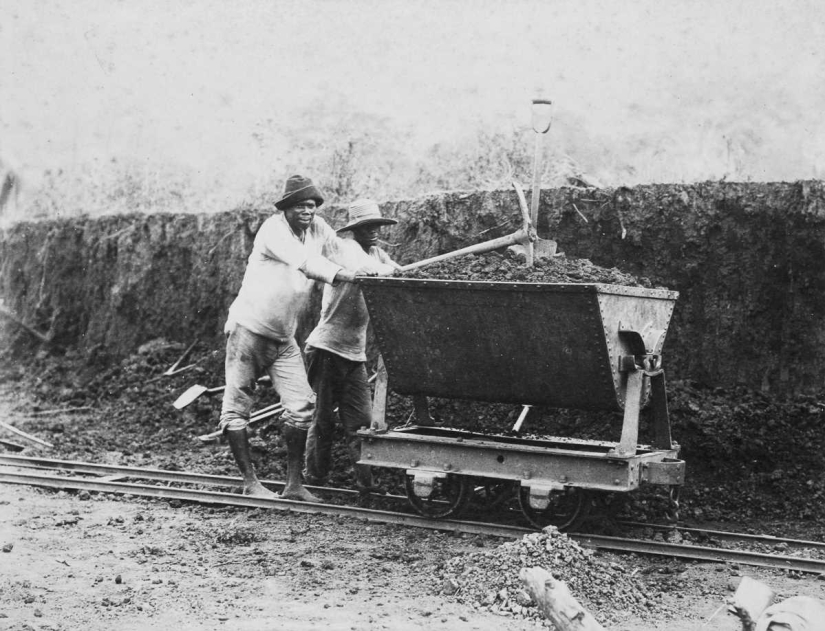
4. 1885 Jamaican workers push a cart full of earth along a narrow gauge railway.
The project turned into a disaster. It quickly became apparent that building a canal at sea level was impossible and that the only viable plan was to build a chain of locks. At the same time, Lesseps stubbornly adhered to the plan to build a single-level canal.
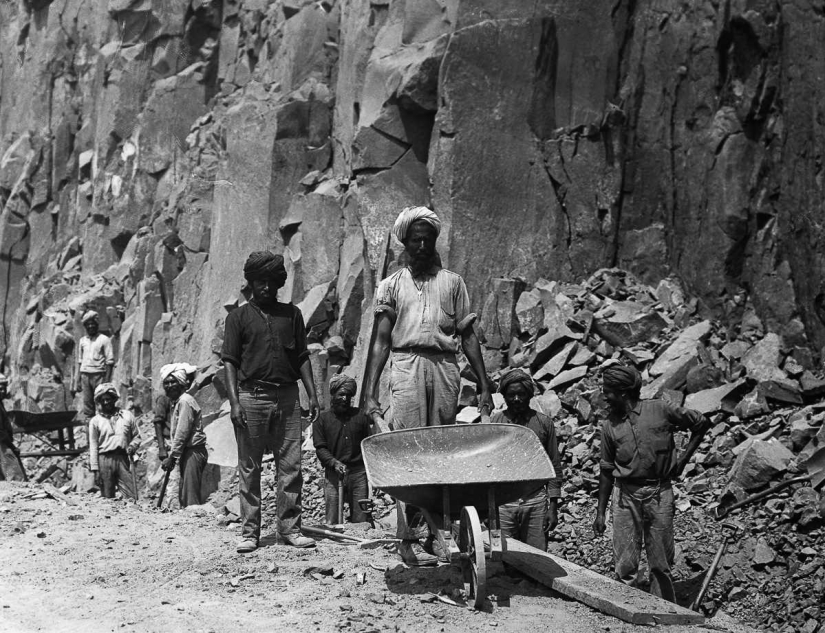
5. 1900 Workers manually carry out earthworks.
Meanwhile, workers and engineers were dying from malaria, yellow fever, and dysentery, and construction was interrupted by frequent floods and landslides. By the time the lock plan was accepted, it was already too late. An estimated 22,000 workers died. Construction was years behind schedule and cost hundreds of millions over budget.
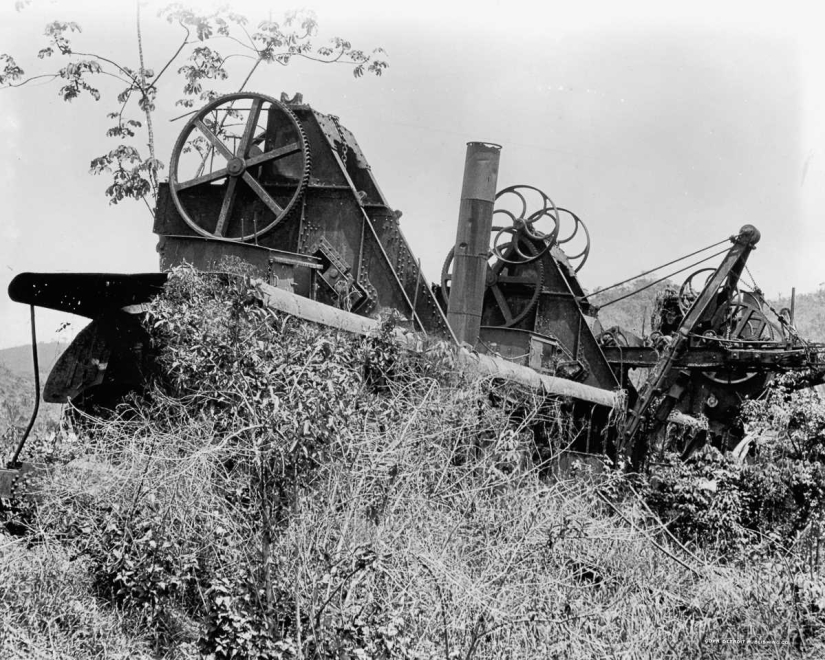
6. 1910 Abandoned French equipment in the canal zone.
The company went bankrupt and collapsed, destroying the hopes of 800,000 investors. In 1893, Lesseps was found guilty of fraud and mismanagement, and died in disgrace two years later.
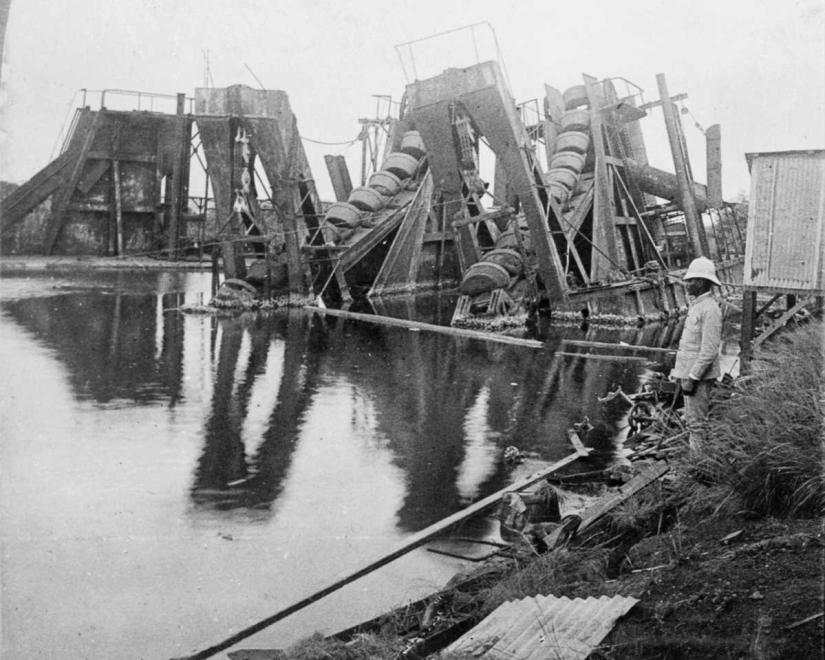
7. 1906 A man stands next to an abandoned French dredger.
In 1903, with secret support from the United States, Panama seceded from Colombia and in return awarded the US canal rights. The following year, the US purchased the remains of the French company and continued construction.
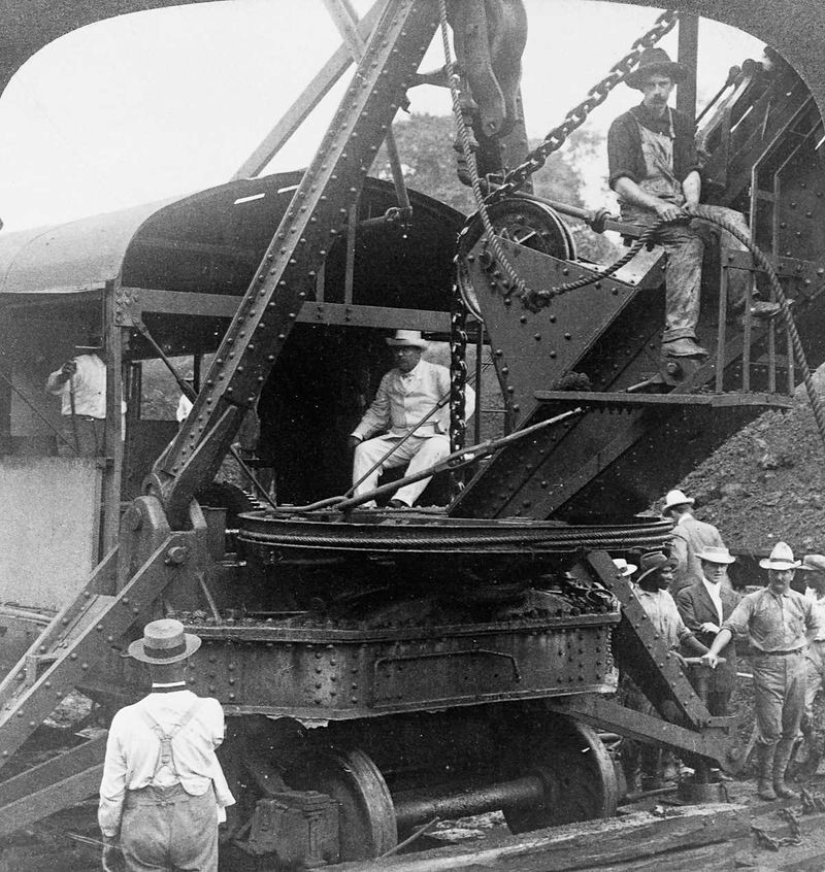
8. 1906 President Theodore Roosevelt sits in a crane cab during a visit to a canal construction site.
“I took the canal zone and left Congress to debate; as long as the debate goes on, the channel goes on” (Theodore Roosevelt).
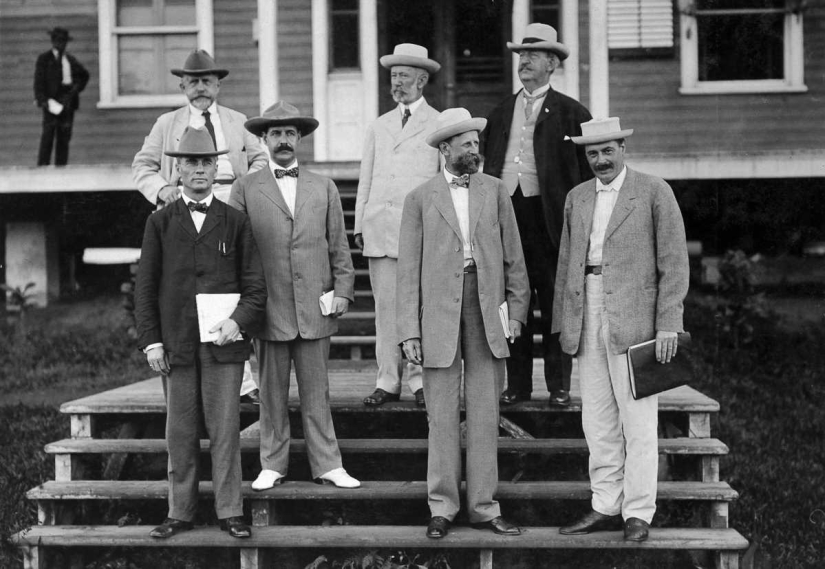
9. 1908 American engineers sent by President Roosevelt.
Faced with the same disease problem as the French, the Americans embarked on an aggressive mosquito eradication campaign. (The link between malaria and mosquitoes was still a very new theory at the time.) This dramatically reduced the incidence and increased productivity.
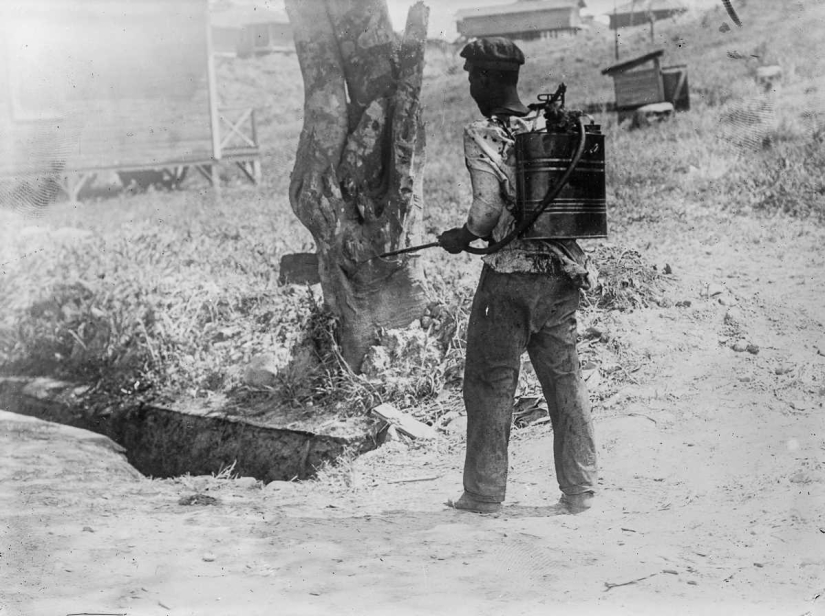
10. 1910 Mosquito exterminator at work in the canal zone.
The channel of the Chagres River was blocked by the Gatun Dam, creating Lake Gatun, the largest artificial lake of that time. It stretches across half of the narrow isthmus.
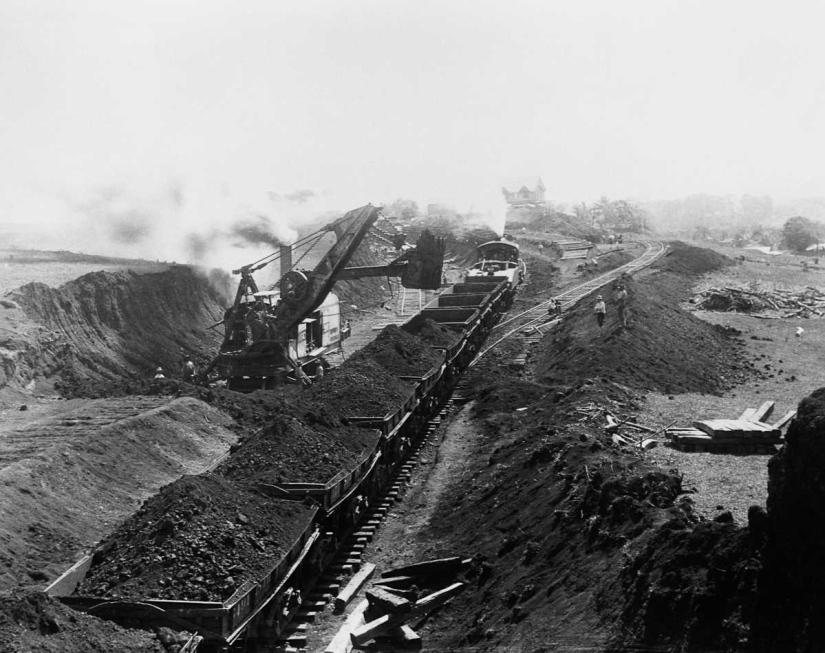
11. January 1907 Earthworks at the site of the Gatun lock.
Massive locks were built at both ends of the canal on the Atlantic and Pacific oceans. These structures, 33 meters wide, allowed ships to pass through a series of chambers with controlled water levels, rising to the height of Lake Gatun and the channel - 26 meters above sea level.
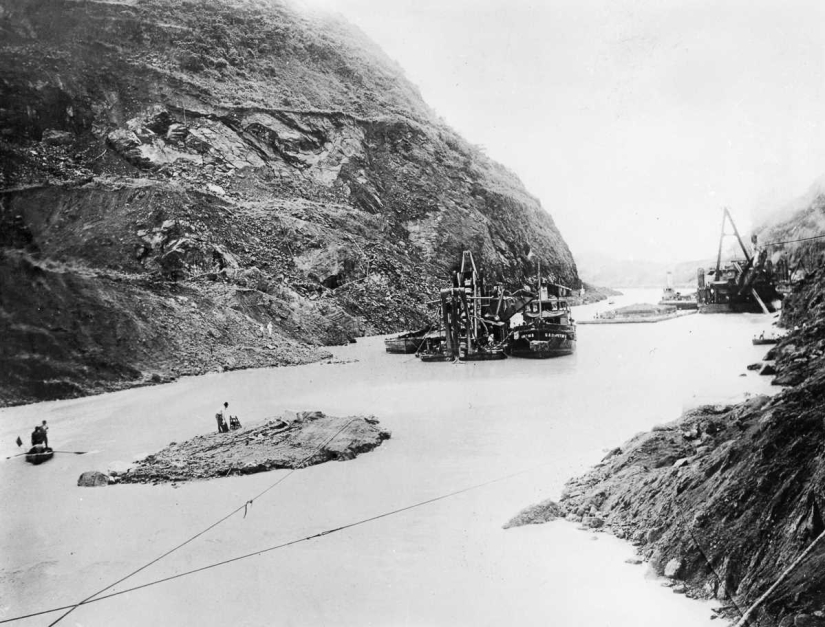
12. 1910
The most difficult was to cut the 13-kilometer stretch of Culebra through a mountain range 64 meters high. 27,000 tons of dynamite were used to blow up nearly 80 million cubic meters of earth, which was hauled away by steam shovels and trains.
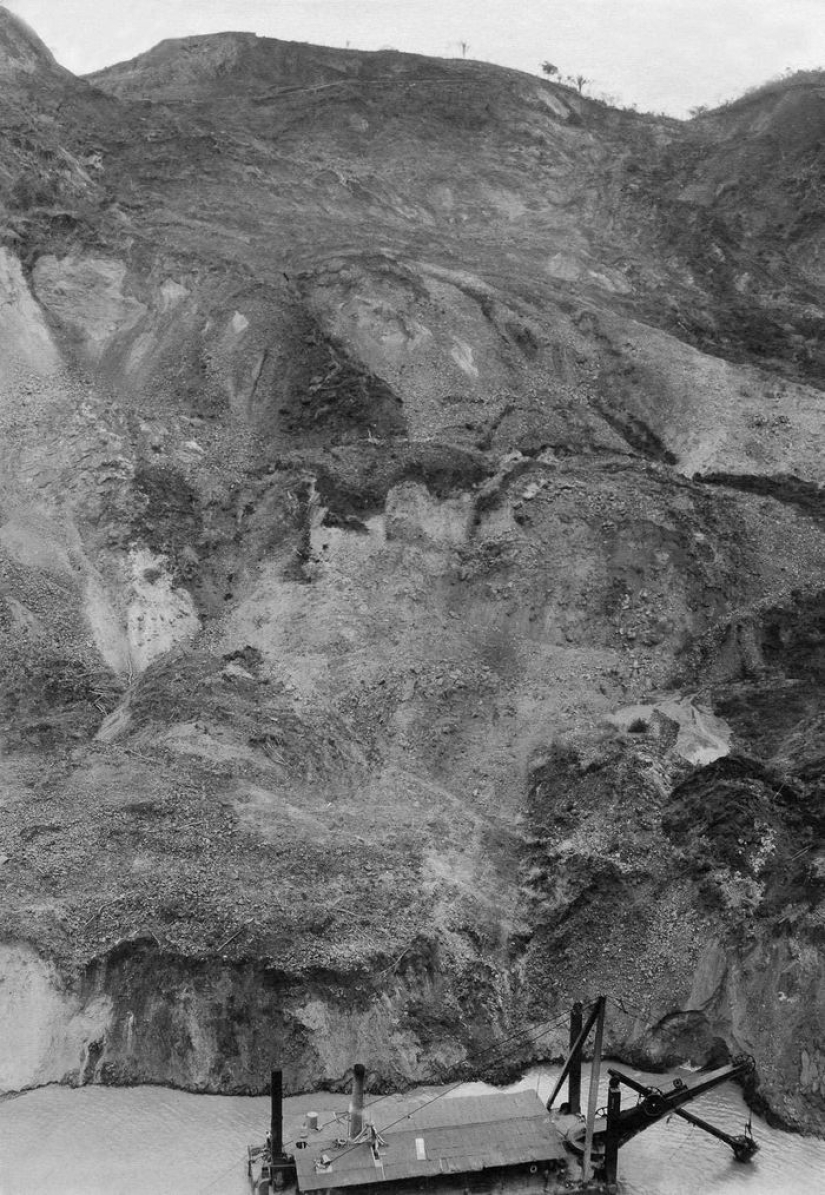
13. 1907 An excavator removes soil after a landslide on the Culebra stretch.
Due to a misjudgment of the composition of the geological strata, earthworks were constantly plagued by unpredictable landslides, sometimes requiring several months to deal with the consequences.
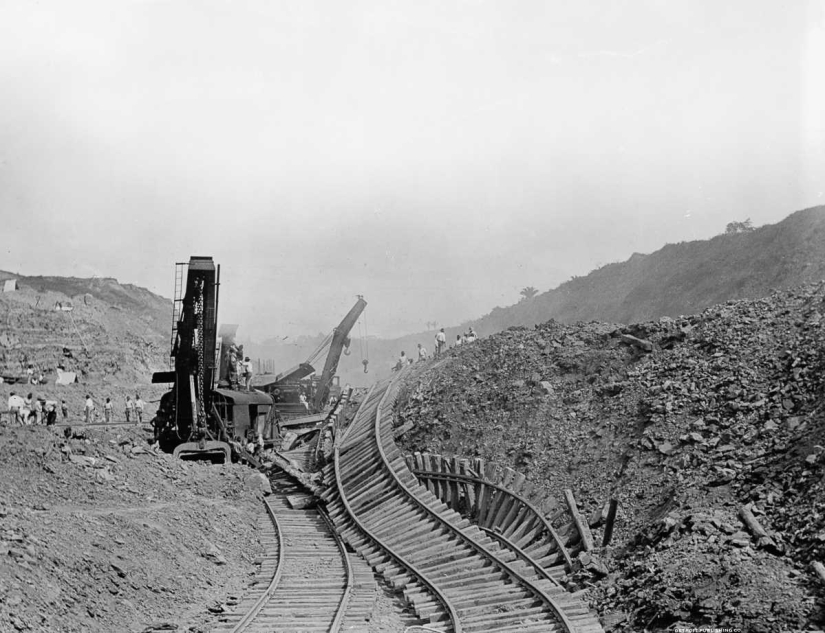
14. 1910 Railroad displaced after a landslide.
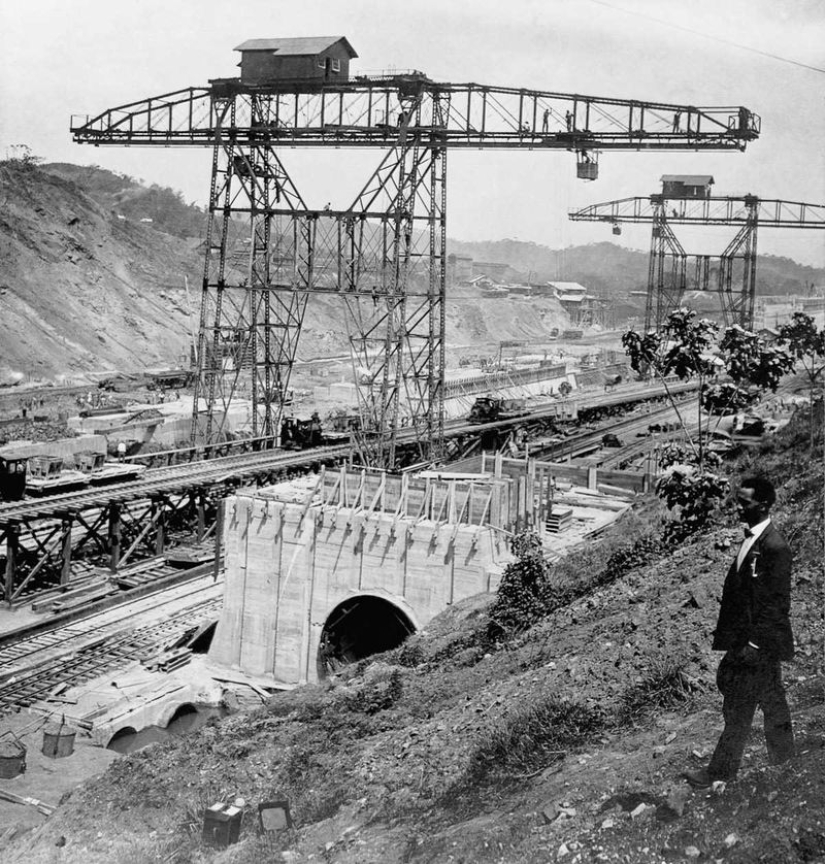
15. April 8, 1910. A man stands on the west bank next to the Pedro Miguel lock under construction.
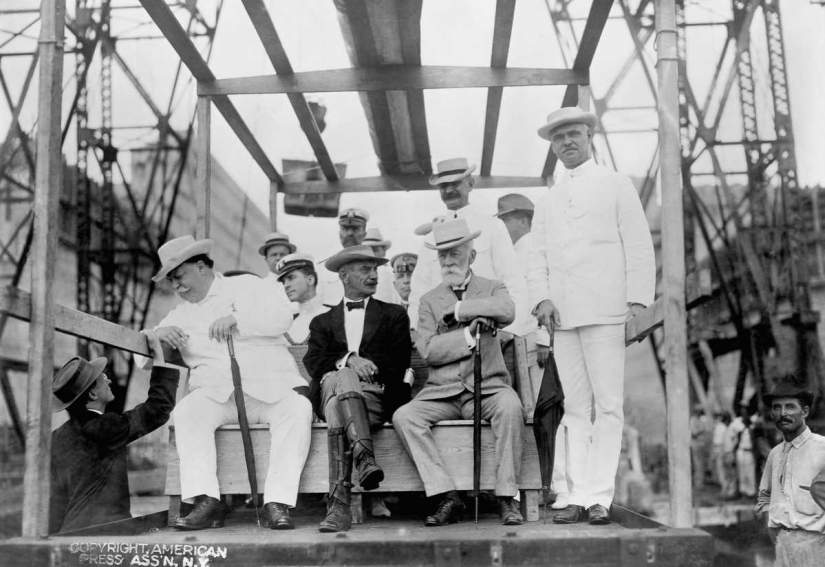
16. November 1910 President William Howard Taft (left) visits Gatun Lock with Supreme Court Justice Oliver Wendell Holmes (seated, right) and Chief Engineer Colonel George Goethals (standing, right).
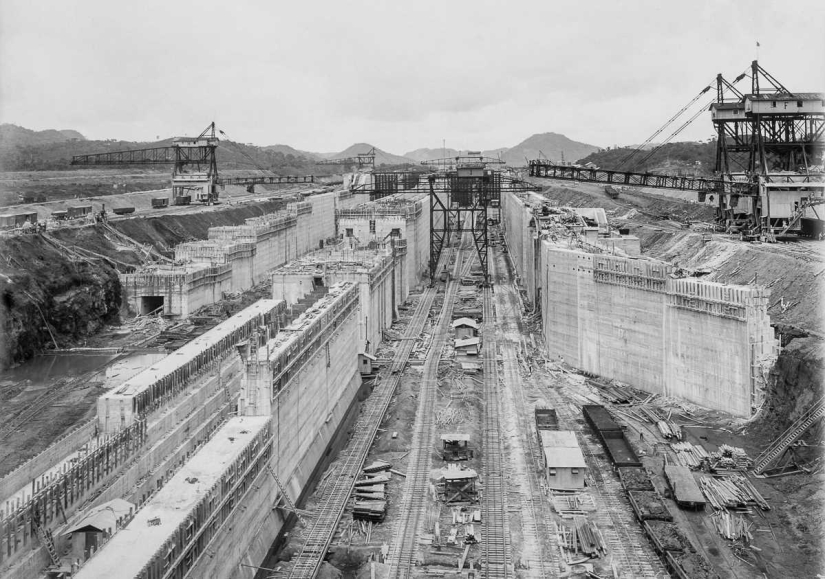
17. November 10, 1912. Construction of the Miraflores lock.
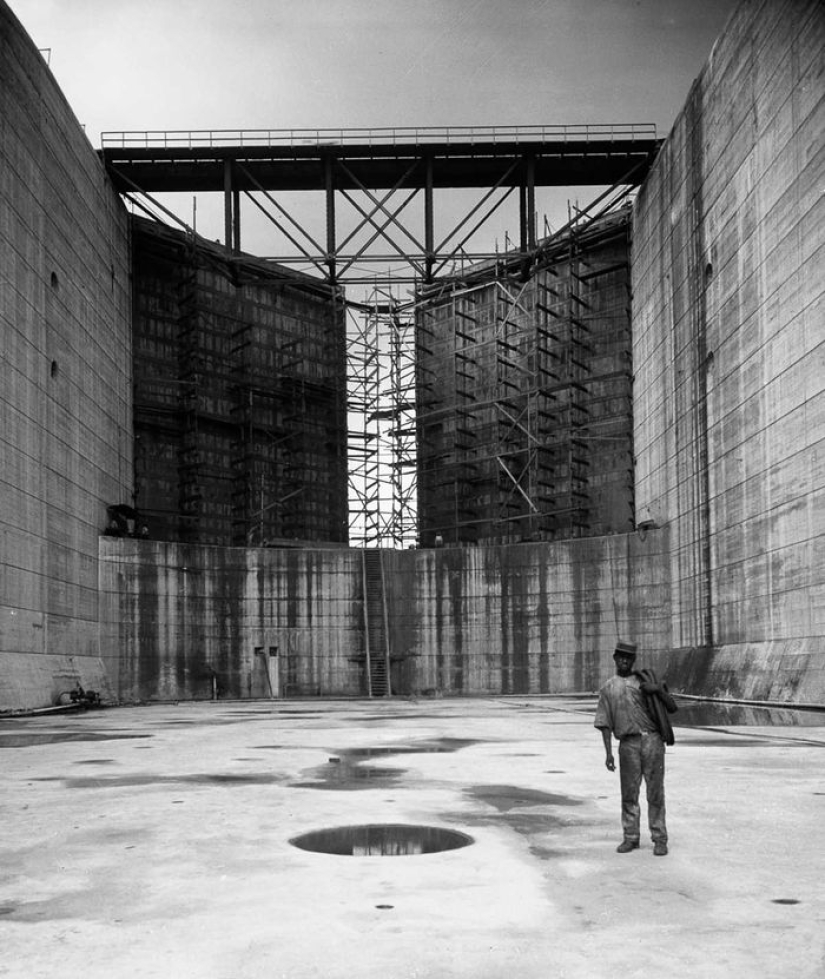
18. August 1912 A man stands in one of the locks.
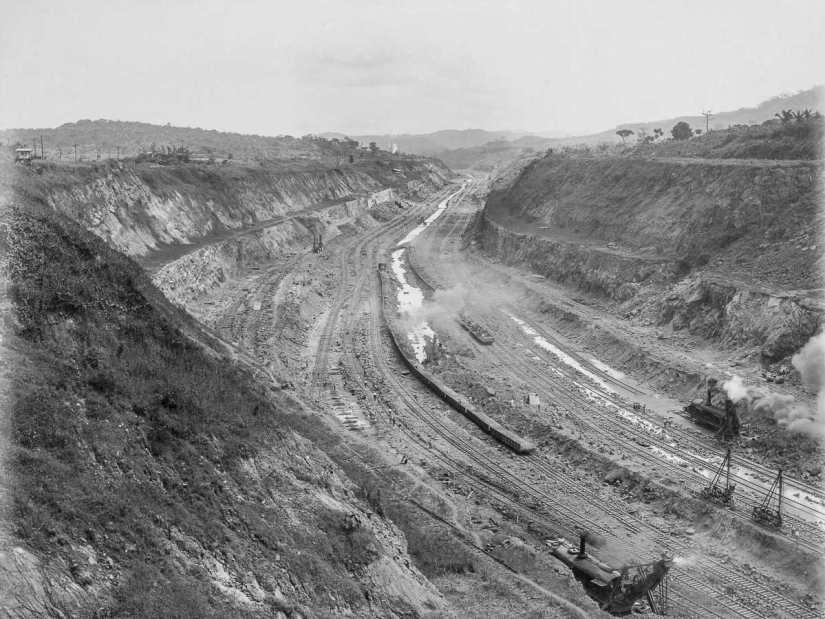
19 June 1912 View of the construction of the Culebra stretch from the west bank.
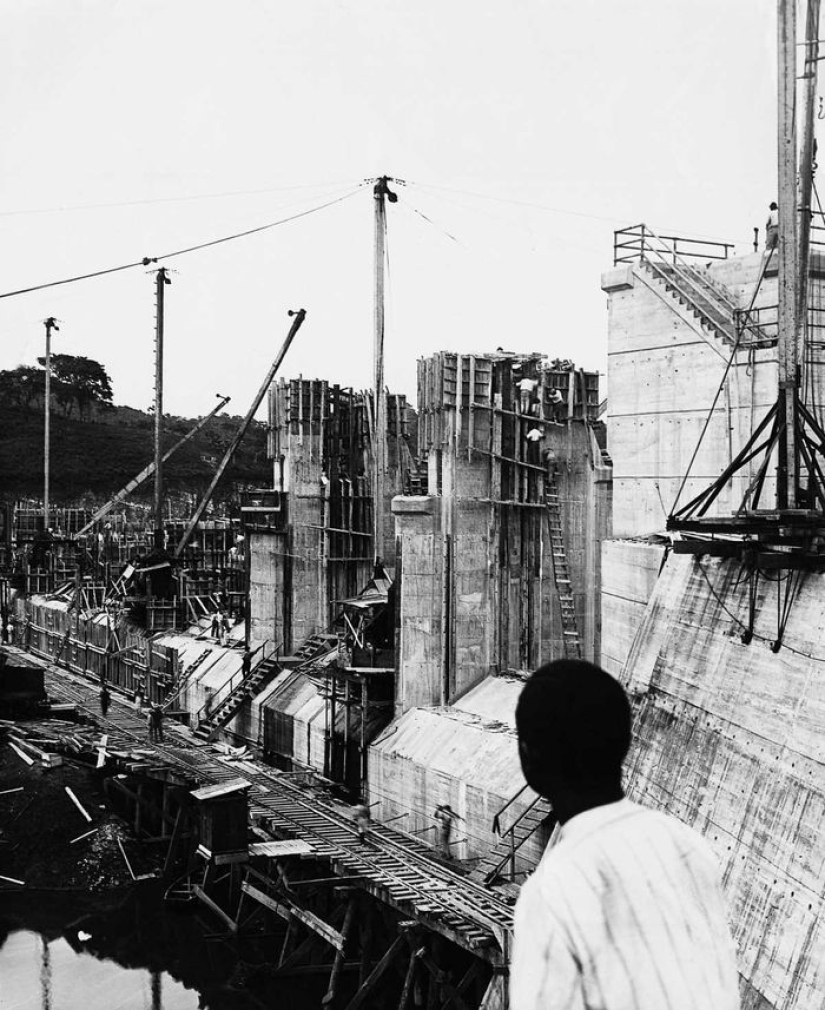
20. August 6, 1912.
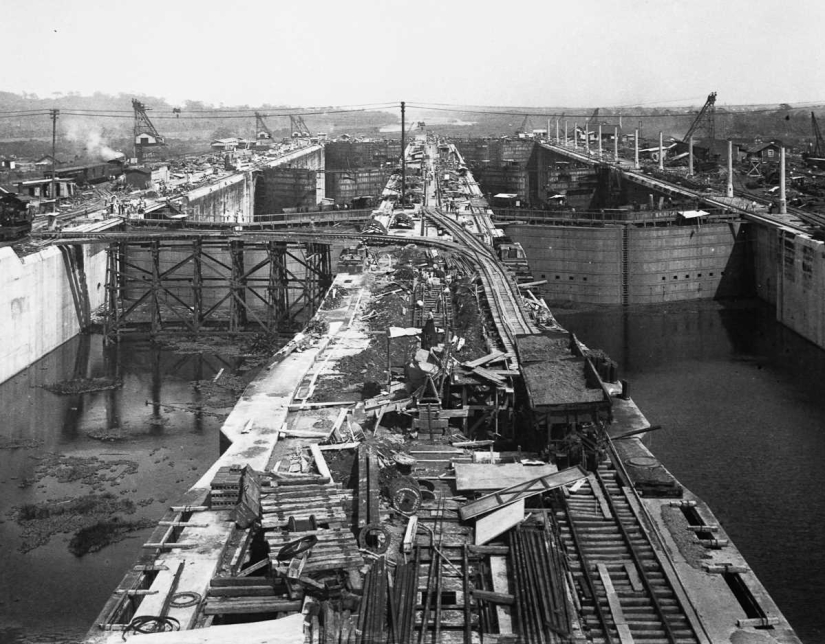
21. November 1912 View from the top of the Gatun lock looking north towards the Atlantic Ocean.
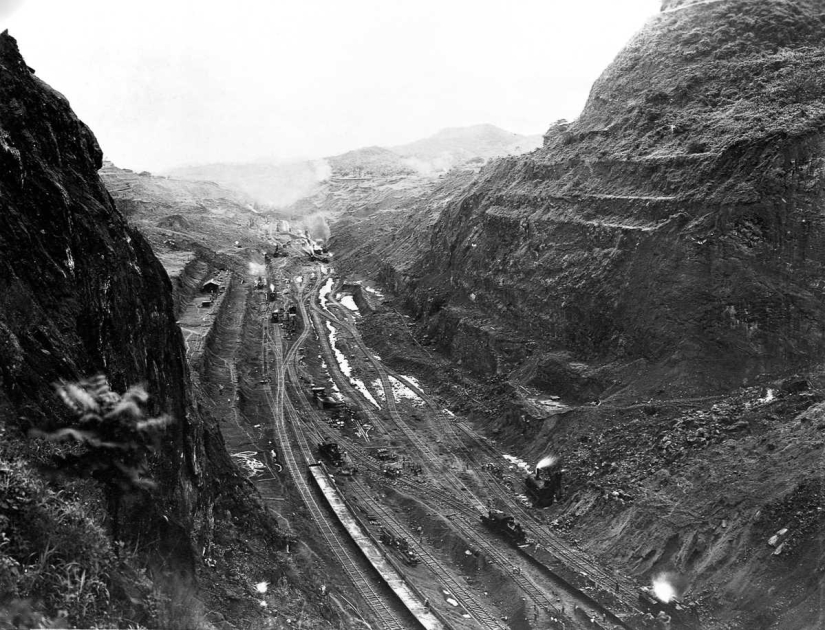
22 June 1913 One of the deepest points of the Culebra segment.
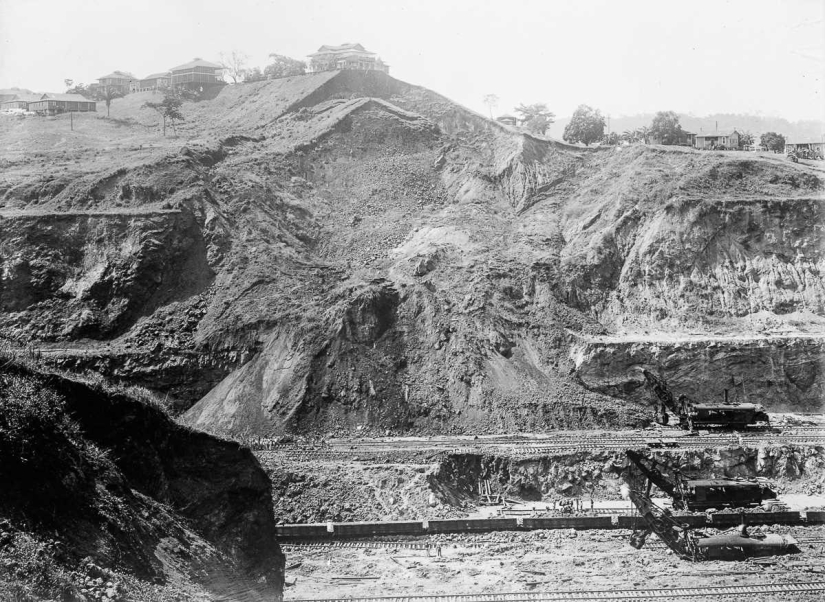
23. 1913
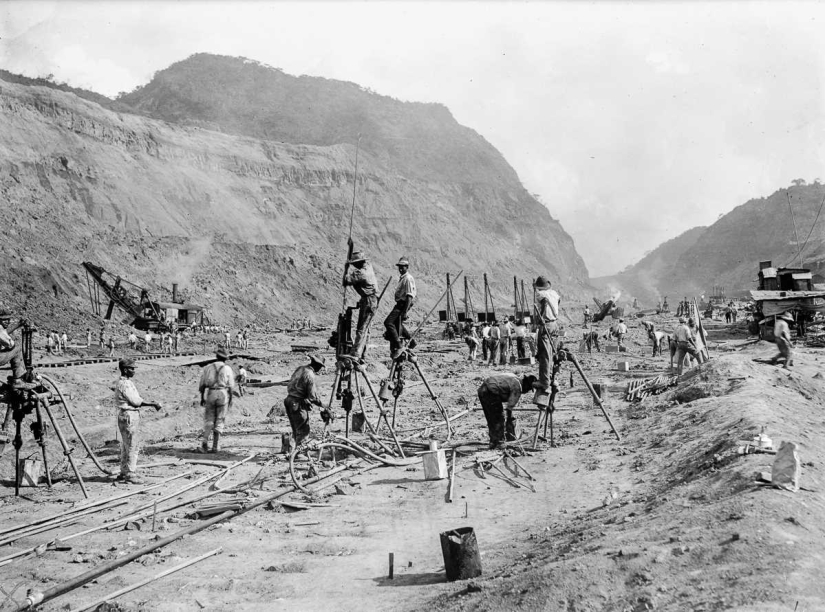
24. 1913
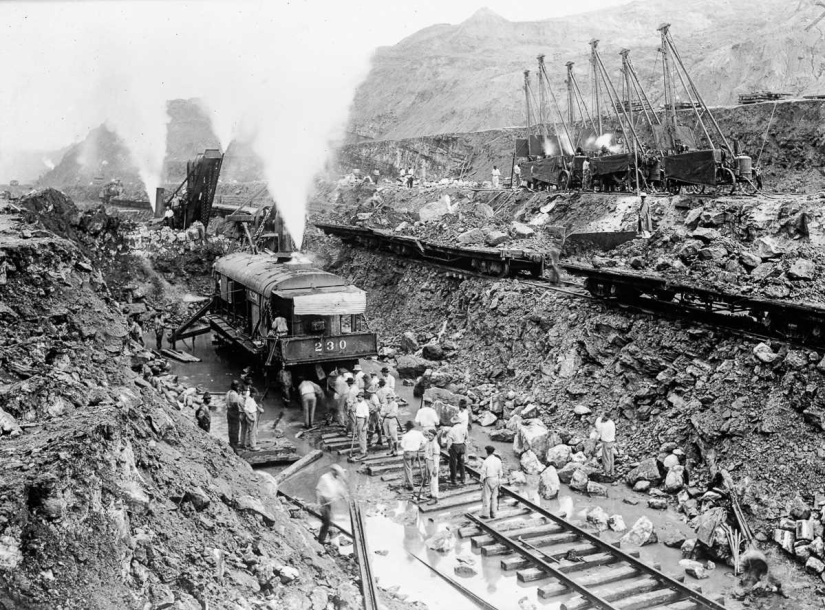
25. 1913
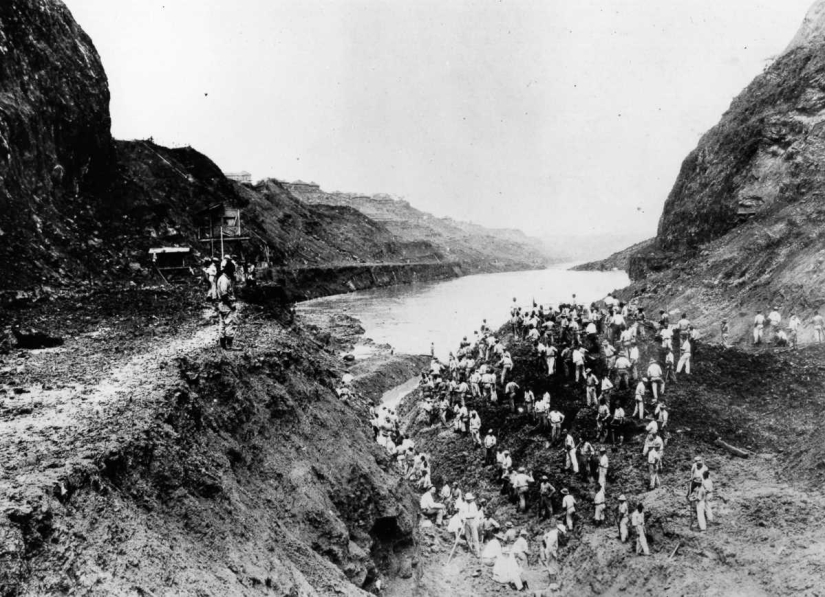
26 November 1913 Workers struggle with the aftermath of a landslide.
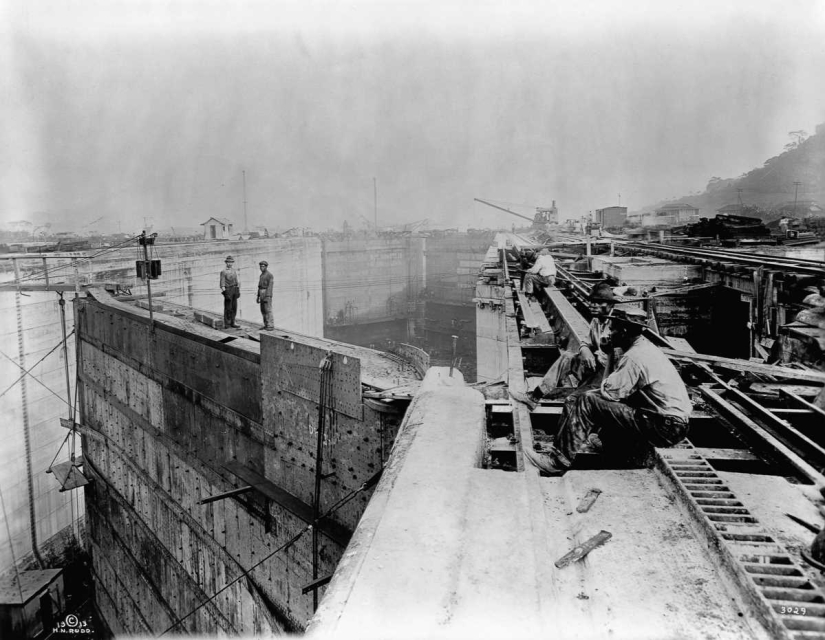
27. 1913 Workers during a break at the top of the gateway.
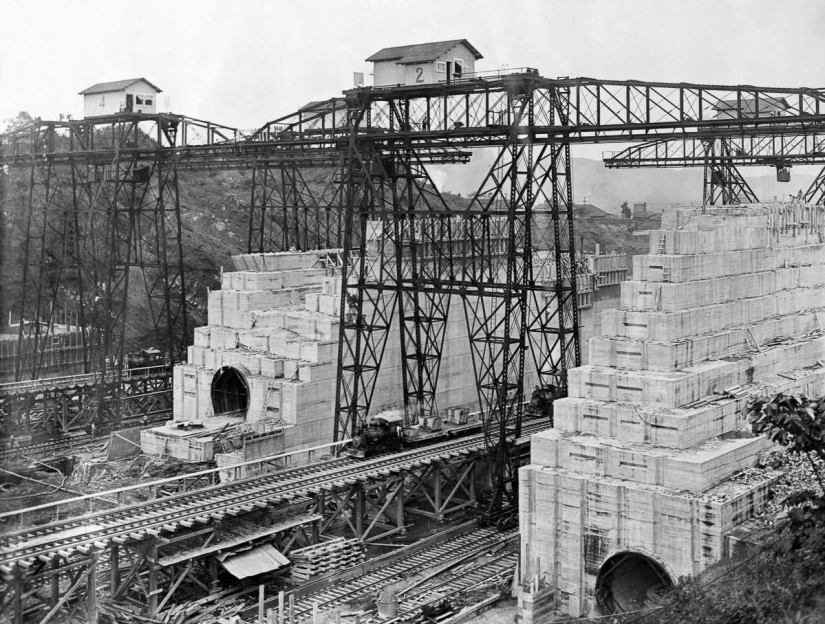
28. 1913 The train and the crane crossed at the Pedro Miguel lock.
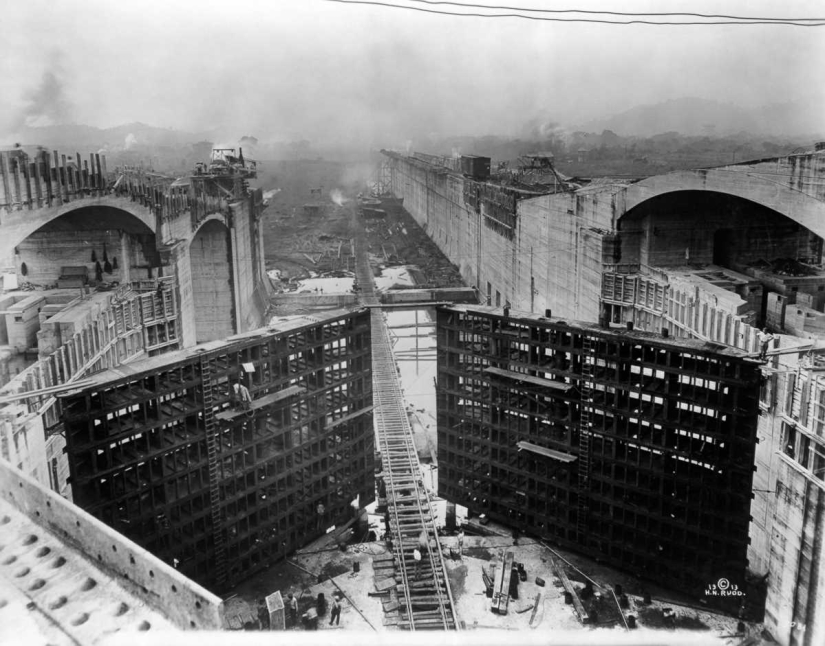
29. 1913 Gateway during construction.

30. 1913 Engineers stand in front of the canal's massive lock gates.
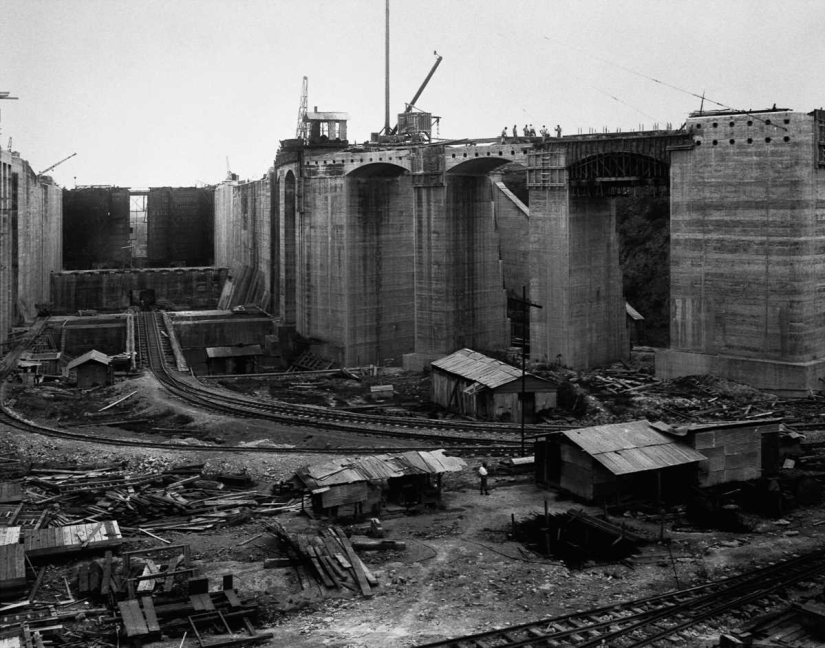
31. August 8, 1913. Construction of the Gatun Gateway between the Atlantic Ocean and Lake Gatun.
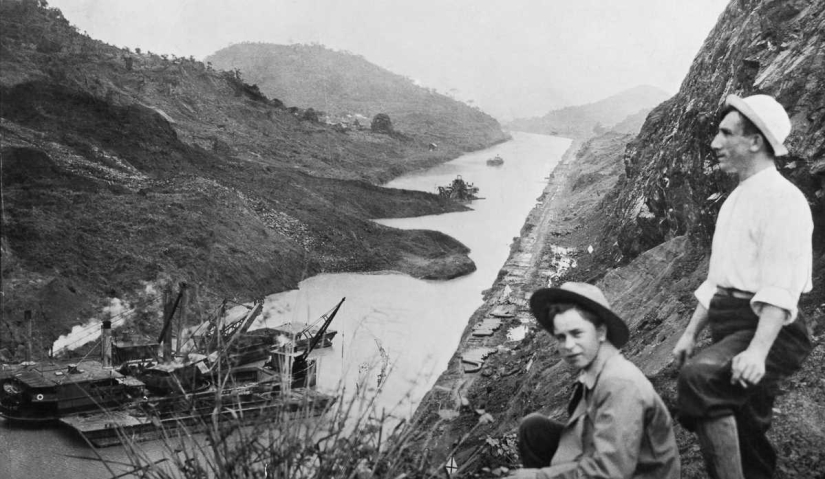
32. February 1, 1914. Men look at the work of a dredge to clean up the aftermath of a landslide in Cucarache.
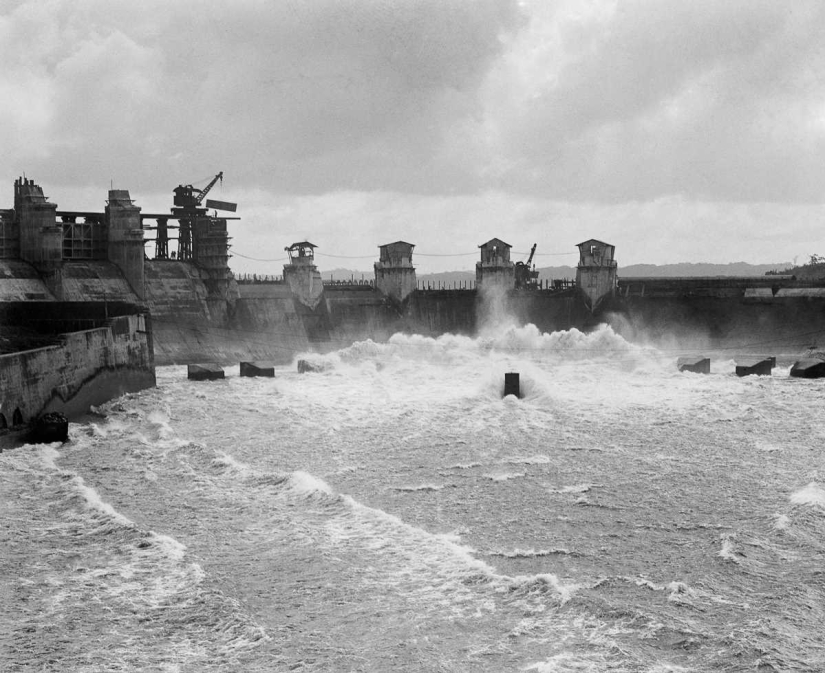
33. 1913 The spillway of the Gatun Dam, which separates the artificial Gatun Lake, the main part of the canal.
On December 10, 1913, a passable water route between the two oceans was finally created. On January 7, 1914, the French floating crane Alexandre La Valley made the first passage through the canal.
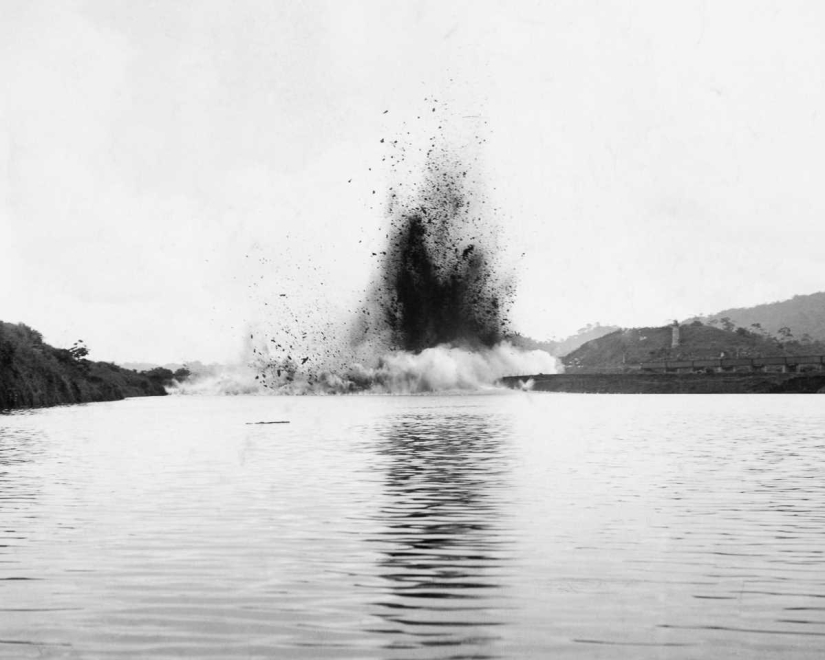
34. October 9, 1913. An explosion near the city of Gamboa opens the way for a canal to the Pacific Ocean.
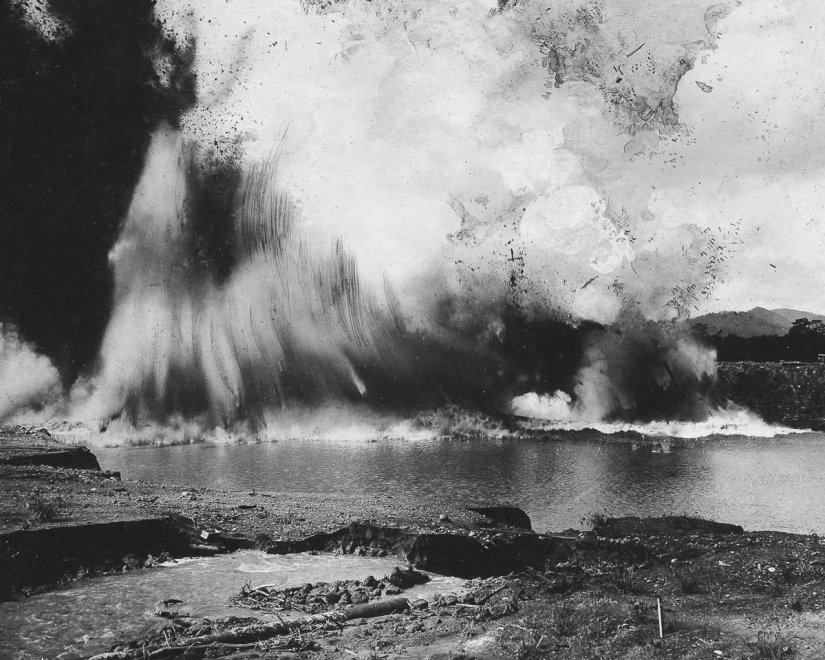
35. 1913 The explosion of the dam separating the canal from the Atlantic Ocean.
Today, 4% of the world's commercial cargo transportation passes through the Panama Canal - about 15,000 ships a year. Plans are being made to build an additional set of wide locks, as well as a competing canal through Nicaragua.
The highest fee for passage through the canal - 142 thousand dollars - was demanded from a cruise ship. The lowest toll, $0.36, was paid by adventurer Richard Halliburton, who swam across the canal through the locks in 1928.
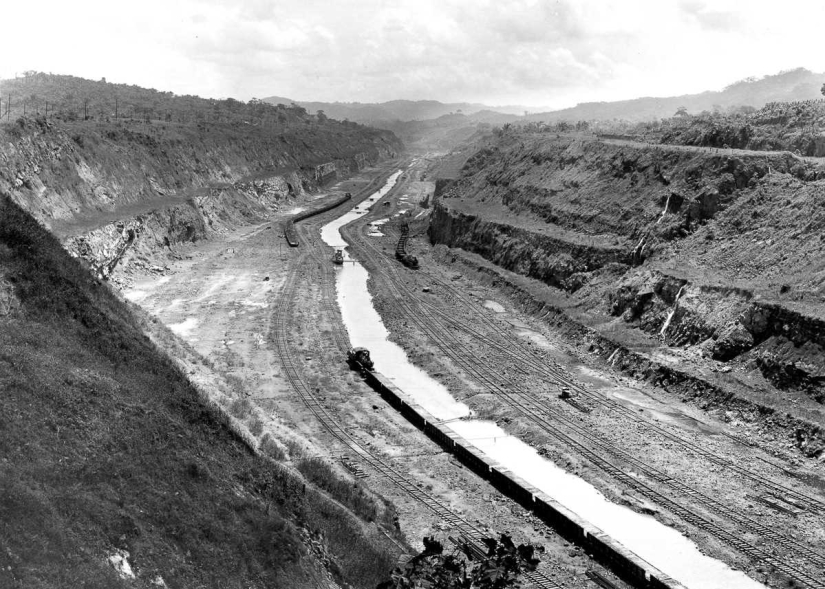
36. 1913
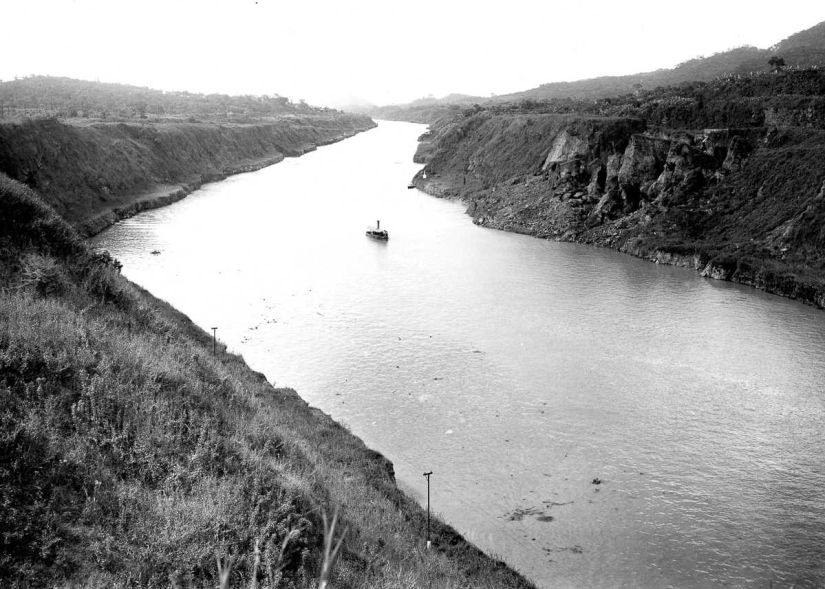
37. 1914
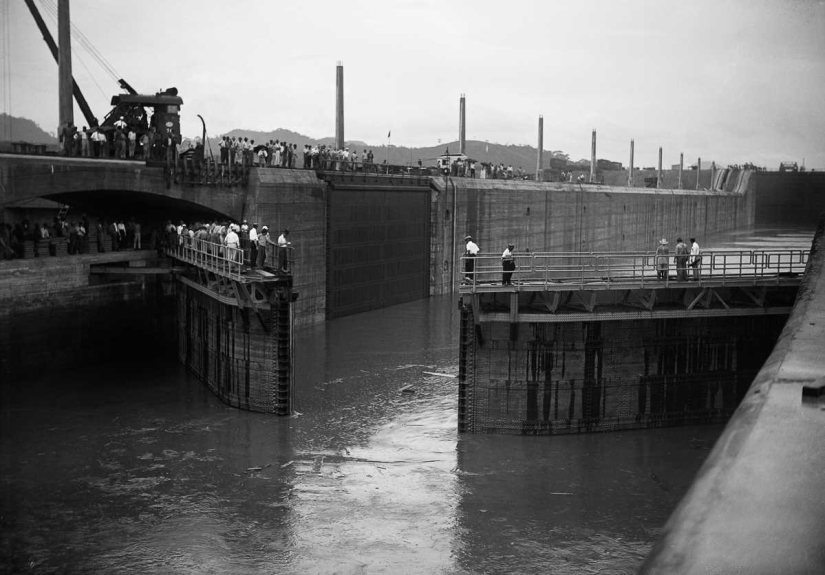
38. October 1913 The gates of the Miraflores lock are opened for inspection.
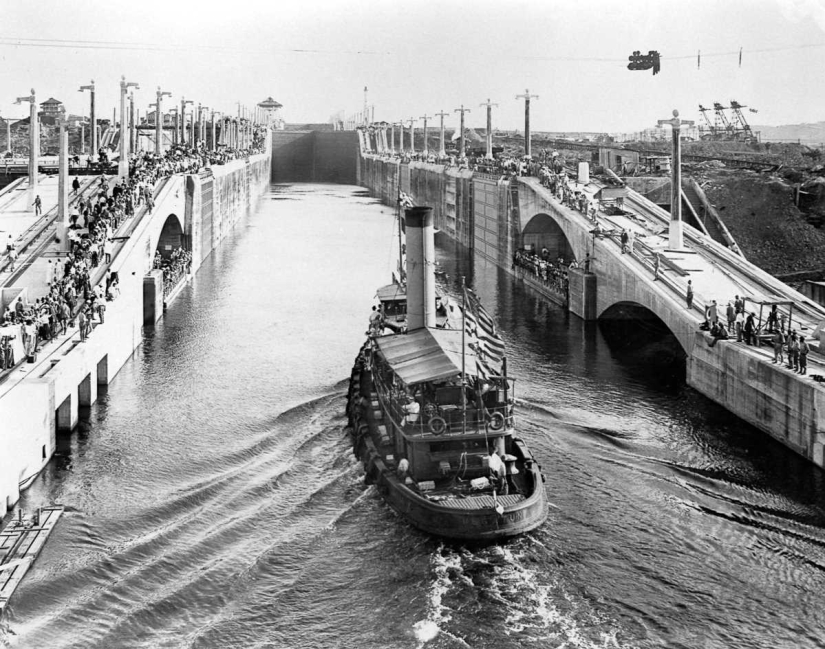
39. September 26, 1913. The tugboat US Gaton is the first to pass through the Gatun lock.
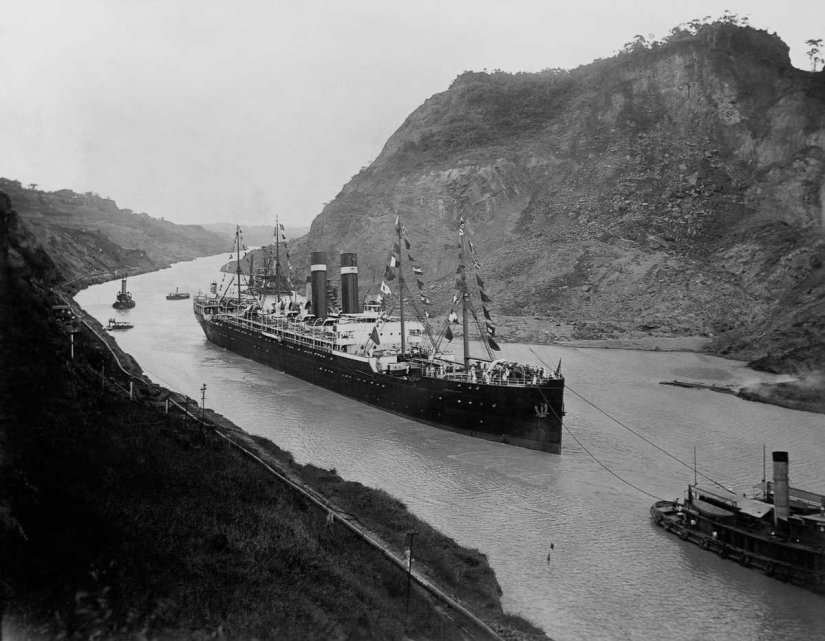
40 April 29, 1915 SS Kronland passing through the Panama Canal.
Keywords: Path | Construction
Post News ArticleRecent articles

The calendar says that summer is coming soon. And with it-vacation, sea, cocktails and all that. But the closer the arrival of the ...

Scientists at the University of Birmingham have proven that music is a great helper in increasing productivity and concentration, ...
Related articles

Watch how flower is formed by the ovary, such as into the fruit and as he poured the juice – a great experience. At least in the ...

There are many talented architects and engineers in different parts of the world who have implemented more than one ingenious ...

We've learned that the celebrity homes amazes with wealth and glamour. Indeed, the star mansions usually stagger the imagination. ...

First, it is beautiful. Secondly, it is really fascinating. These sifco just cut different objects, but looking at these, you may ...